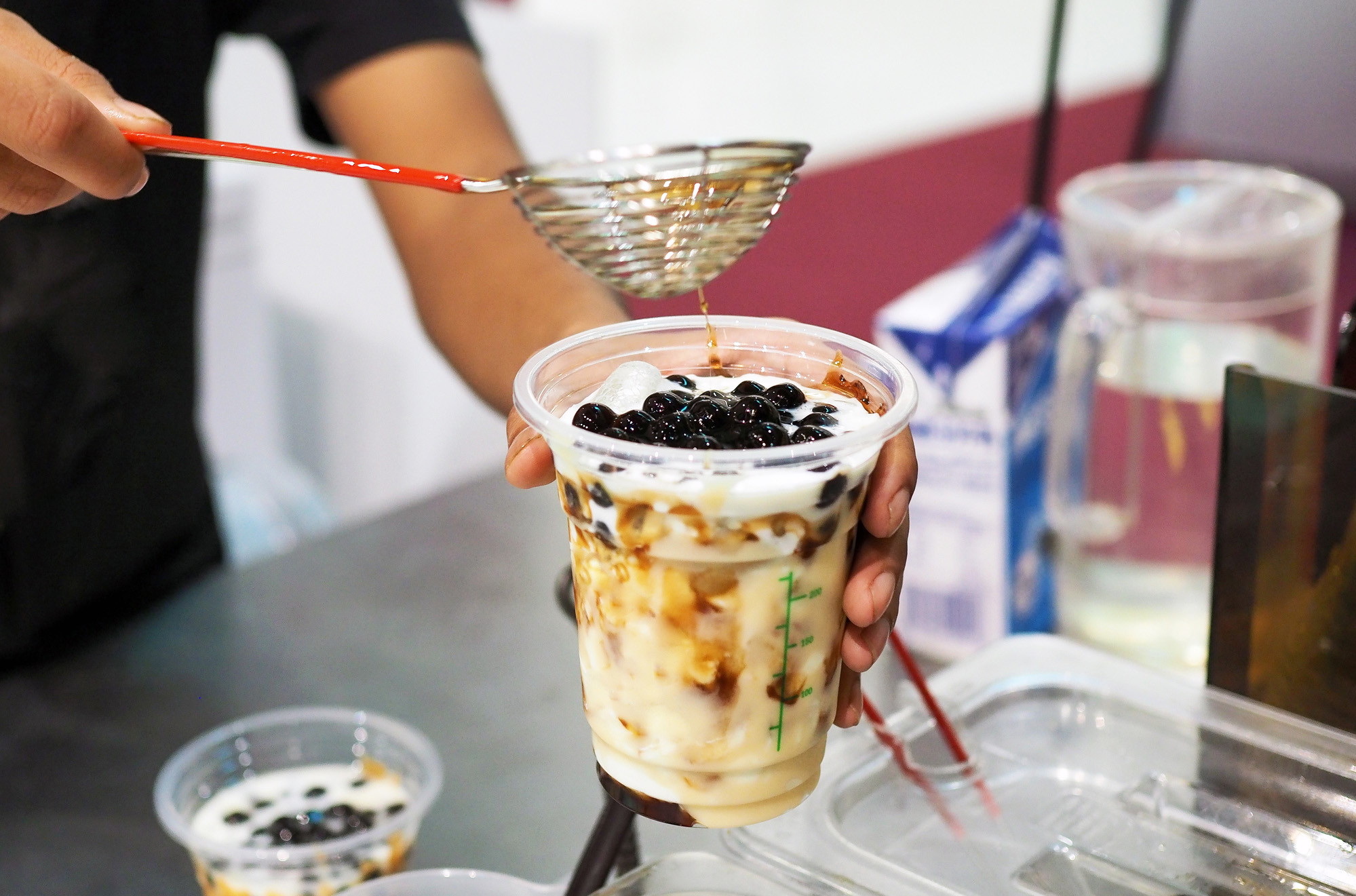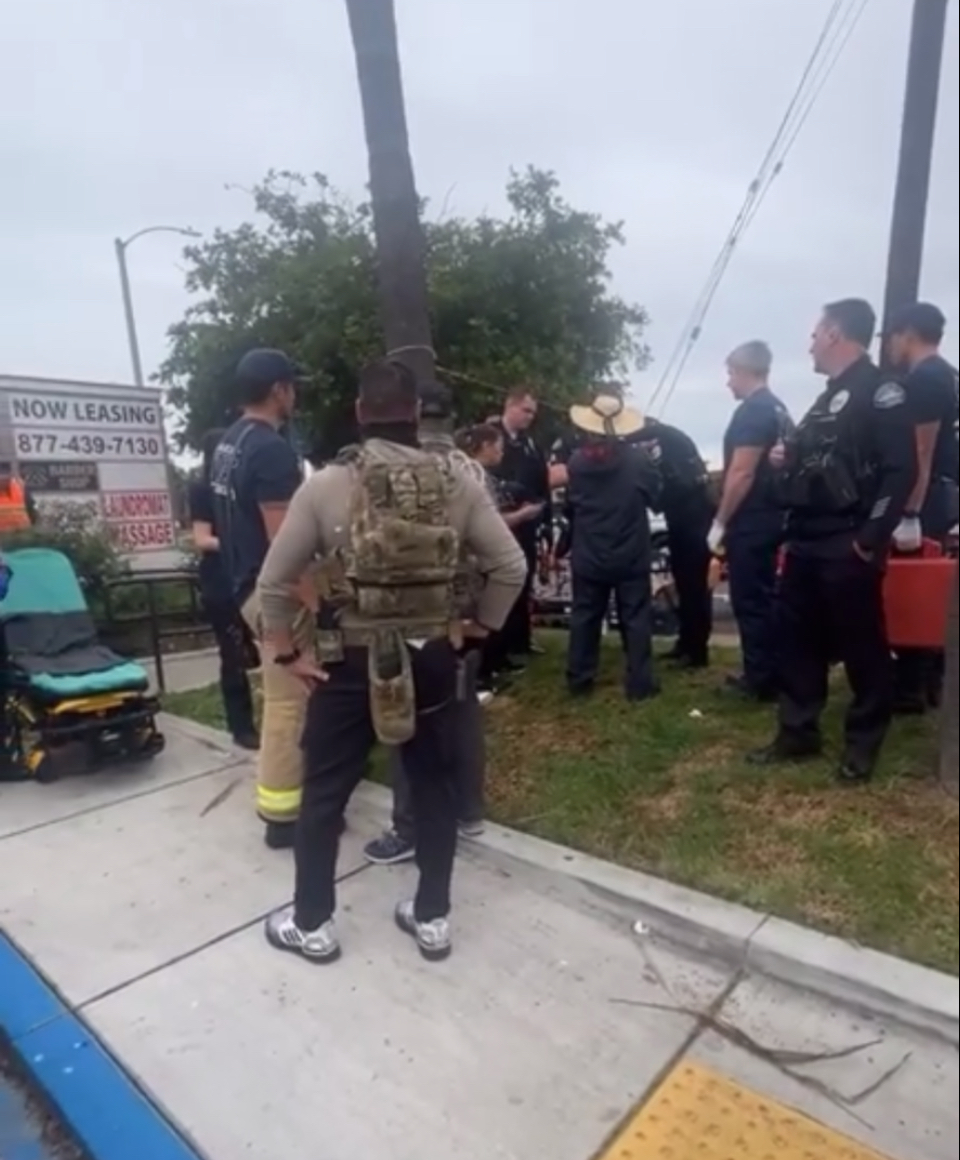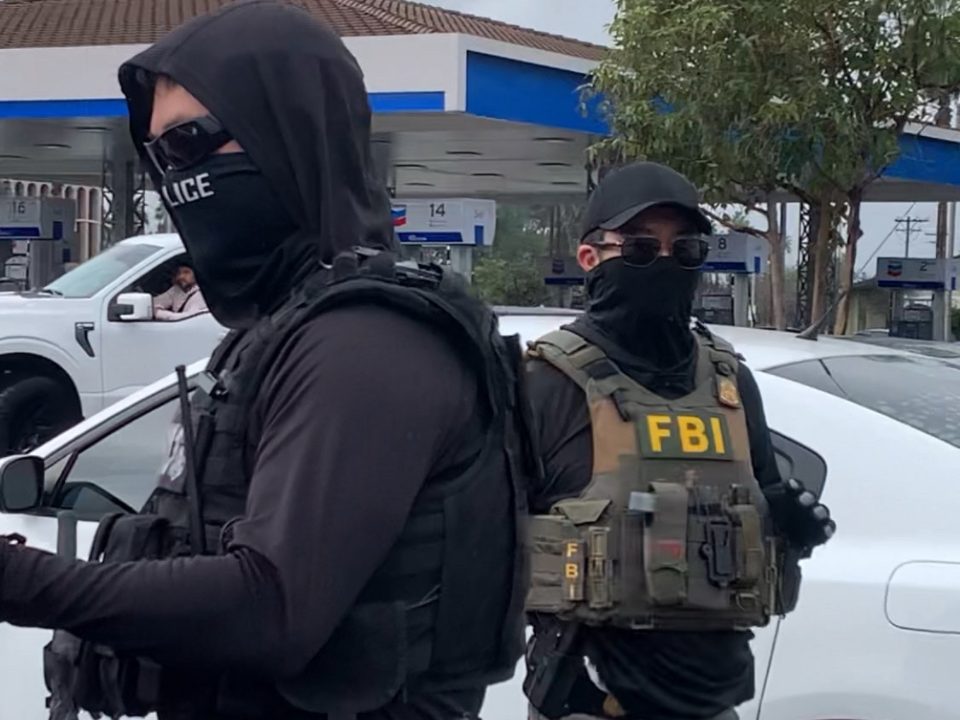In a compact strip-mall boba shop in Los Angeles County’s San Gabriel Valley, red tables line the wall. They could make for an intimate date, or half a dozen teenagers could easily squeeze around one, clutching their bobas with one hand and phones with the other.
The last time I was at this place, in the city of Monterey Park, it was pre-pandemic. I dropped in with a friend while we were waiting for a table at the dumpling spot next door. It was like walking into a popular bar, with people crowding tables, pop music blasting, and everyone checking out the menu. My friend laughed and pointed out that someone had written on the chalkboard menu, “boba and chill.”
This time when I ordered, the host asked for my preferred level of sweetness.
It is an important question. It goes to why many people love, and a growing number of others expected press concern, about boba drinks, or bubble tea as they are also called. Researchers have recently sounded the alarm, calling boba “a burgeoning threat to adolescent health,” one “akin to soft drinks.” And years before recent studies of the popular drink, one San Gabriel Valley advocacy group started a campaign called Rethink Your Asian Drink (RYAD), to raise concerns about boba’s sugar content.
When RYAD launched in 2016, 10% of Asian Americans experienced diabetes, compared to 7% of white Americans, and the National Institute of Health reported more than half of Asian Americans with diabetes are going undiagnosed. Diabetes among Asian Americans has not lessened in the years since.
I sip my coffee-flavored drink slowly through the large straw: I got the lowest sweetness — 25% — but it is still very sweet.
Boba are small, chewy gelatinous balls spooned into milk teas for flavor, filling the bottom of the cup like the contents of a playground ball pit. The spheres are made by boiling tapioca flour from cassava root together with sugar until it becomes soft. Additional sweeteners are typically added. While the drink originated in Taiwan, it is not traditional by any means.
Nonetheless, since arriving here in the early 1990s, the drink has become a symbol of Asian American identity, inspiring podcasts, YouTube channels, essays and, recently, an exhibit at the Chinese American Museum in Los Angeles. Global boba sales are expected to top $3.39 billion by the end of 2027. Dozens of boba shops are clustered across the San Gabriel Valley.
Of the more than 2 million residents of the San Gabriel Valley, at least one quarter are Asian or Asian American, a group that includes immigrants from China, the Philippines, Vietnam, and other parts of Southeast Asia, Korea, Taiwan, Japan, Hawaii, and the Pacific Islands as well as multiple generations of Californians whose families hail from those places. There are more Asian Americans in the San Gabriel Valley than in 42 states, according to the advocacy organization Asian Americans Advancing Justice.
A 2014 study found Asian Americans disproportionately suffered type 2 diabetes despite low rates of obesity compared to whites, African Americans, and Hispanics.
When the community came into its own in the 1990s, the boba shop became a viable business by Asian Americans for Asian Americans, as well as a safe space for its youth and, later, their peers. These shops should be considered a “third space,” said Juily Phun, Ph.D., borrowing a term used by cultural theorist Homi K. Bhabha.
“It doesn’t require white purveyors. It’s not part of the white gaze,” said Phun, co-curator of “The Boba Show,” an exhibit at the Chinese American Museum in downtown Los Angeles, and a professor of Asian and Asian American Studies at California State University, Los Angeles. “It’s ours, where we can value ourselves and not get weird looks.”
The importance of a safe space for Asian American youth, even in the San Gabriel Valley, cannot be understated. Anti-Asian hate crimes have reached new heights in the past few years, fueled by pandemic-related conspiracy theories. But that hate is not new. In the 1980s, Monterey Park, now considered the first suburban Chinatown, proposed an English-only initiative, which began in response to hostility toward “Chinese-language” books at the local library. There are a dozen historical landmarks across California, including one in Arcadia, that mark detainment centers for Japanese immigrants and, mostly, Japanese Americans, who were imprisoned in these camps during World War II. American anti-Asian discrimination follows a direct line back to the Chinese Exclusion Act of 1882, while scholars and advocates say the hate began with the arrival of the first Asian to the United States.
I cannot help but wonder if the lack of invested institutional safety for the Asian American community extends to health-related research. Otherwise, how do we explain the relative lack of nutritional data for a global, multibillion-dollar industry that is ubiquitous within Asian American communities?
The added sugar in a typical serving of boba tea equals the maximum daily amount of sugar recommended for men and over 150% what is recommended for women, according to a 2017 study published in Food Science & Nutrition. With additional sweeteners, like jelly or pudding, the drink exceeds recommended sugar intake for all populations.
“A delicate line we are trying to balance is, we don’t want to demonize or disparage boba, because it’s part of the community, the culture, nor do we want to harm small, in many cases mom-and-pop, businesses.”
~ Kyle Tsukahira, co-director, Asian Pacific Islander Forward Movement
“The high caloric and sugar content of boba beverages pose public health concerns as they have the potential to further exacerbate the childhood obesity epidemic,” the researchers found. Sugar-sweetened beverages have been linked to increased body weight and to obesity-related issues such as type 2 diabetes and metabolic diseases. The authors of the study recommended that public health advocates and doctors working in Asian communities discuss health implications and suggest moderate consumption.
A 2014 study found Asian Americans disproportionately suffered type 2 diabetes despite low rates of obesity compared to whites, African Americans and Hispanics. When researchers disaggregated data based on nationality or heritage — China, the Philippines, Taiwan, Korea and Vietnam—they found Filipinos actually had the highest prevalence of obesity among Asian Americans, akin to Hispanics and African Americans.
Two years after these results were reported, the Rethink Your Asian Drink campaign was launched.
“The intent of the campaign has been to educate people to make informed decisions of what you are drinking and to encourage healthier options,” said Kyle Tsukahira, co-director of Asian Pacific Islander Forward Movement, an API health and advocacy organization that leads RYAD. “A delicate line we are trying to balance is, we don’t want to demonize or disparage boba, because it’s part of the community, the culture, nor do we want to harm small, in many cases mom-and-pop, businesses.”

Graphic by the Rethink Your Asian Drink campaign.
The campaign asks boba drinkers to be aware of the sugar in the drink and its impact on their bodies. Rather than calling for fans to avoid the drink altogether, the RYAD campaign encourages moderation and adjusting sugar levels. The campaign includes using social media and graphics to break down the contents of a typical boba drink, pose critical questions, and make suggestions to consumers.
Boba shops took notice. The campaign developed a logo and websites as a resource for customers and the community. Soon after, Tsukahira recalls, shops began offering sweetness-level options for boba drinks.
Whether API Forward Movement is responsible for my ability to request the least amount of sweetness for my boba in Monterey Park, the availability of the option is a welcome opportunity and a lesson in better business practices. When I sat down with my drink, the red table my wife and I shared reminded me of the central piece in “The Boba Show.”
The nearly yearlong exhibit is both a celebration and interrogation of the drink. Curators offer a multilayered examination of boba and its social meaning. At the center of the exhibit, visitors are invited to sit at a small cafe table. A gold plate rests on it. Etched onto the plate is a statement that articulates the meaning and value of boba shops—ultimately less a commercial space than a gathering spot for community.
The plate reads: “This gold table and chair symbolize the third space we all create, every time we enter a boba shop. They are sites where we collectively reimagine and build a different corporate space, community space, a safe space. Your presence at this table creates and re-creates this exhibition with us. Please sit and know you are valued; you are welcomed here; you are the gift.”
Unintentionally, the boba shop became a community space—a safe space. When community members suggested how to improve the boba shop, businesses listened. This may have improved their bottom line. It will help community health. Customer health is business health is community health. We could all learn from the boba shop.
This article was produced by Capital & Main, which is an award-winning publication that reports from California on economic, political, and social issues. L.A. TACO is co-publishing this article.







